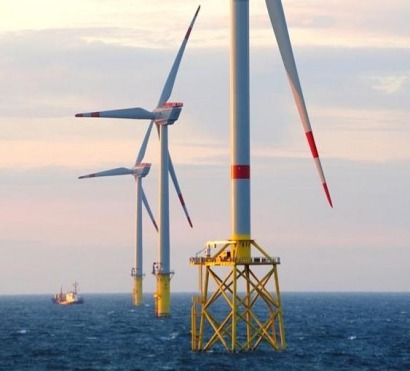
Offshore wind energy deployment can significantly contribute to increasing the share of renewable energy in Europe's energy mix. However, competing uses of the sea, costs, grid integration and other barriers are important challenges to the development of offshore wind.
In an attempt to overcoming the obstacles faced by the European offshore wind industry, the Windspeed Consortium has developed a ‘Roadmap to the deployment of offshore wind energy in the Central and Southern North Sea (2020 – 2030)’ defining a realistic target and a development pathway up to 2030 or offshore wind energy in the Central and Southern North Sea (Belgium, Denmark, Germany, the Netherlands, Norway and the UK). The roadmap also identifies barriers and potential surplus conditions in the North-European electricity grid along with policy recommendations on how to tackle these.
As part of the project, Windspeed is also delivering a decision support system (DSS) tool using geographical information system (GIS) software. The DSS tool produces overlaying maps, showing spatial representation of offshore wind energy potentials in relation to non-wind seas functions and environmental aspects. By facilitating the quantification of trade-offs between electricity generation costs from offshore wind and constraints due to non-wind sea functions and nature conservation, Windspeed explains that this tool “will provide a better foundation for decision making by policy makers in terms of prioritising and allocating space of the development of offshore wind the Central and Southern North Sea”.
The work programme followed by Windspeed has covered the full chain from data and policy inventory, methodology development, to scenario and roadmap definition, including identifying barriers for offshore wind deployment, defining a set of policy recommendations to tackle these, developing scenario forecasts for offshore wind energy, and defining a realistic target and development path for offshore wind energy Central and Southern North Sea basin up to 2030.
The Roadmap represents the final deliverable of the Windspeed project and has a dual objective. Firstly, it presents an ambitious but realistic target for offshore wind with minimum negative impacts on other sea functions present in the Central and Southern North Sea basin in the time frame to 2030. Secondly, it identifies actions and milestones required to achieve this target.
135 GW ambitious yet achievable
The Windspeed analysis has looked at several possible destinations for offshore wind deployment, and considers 135 GW of capacity “to be an ambitious yet achievable target for 2030 in the Central and Southern North Sea”.
However, the Consortium warns that this target is premised on two key assumptions. Firstly, a deployment of this magnitude can only be achieved if countries are willing to increase spatial prioritisation of OWE (closer to shore). Secondly, large clusters of parks, in further from shore locations and in potentially deeper waters, must be developed along with an offshore grid. Furthermore, availability of cost-effective offshore technology components is a prerequisite for far from shore developments.
How far we want to go in terms of offshore wind deployment is closely linked to policy ambitions and priorities, says the Consortium. The 135 GW Grand Design scenario combines developments in near and far from shore locations. Alternatively, policy makers could choose only one of the two pathways – additional nearer to shore developments or additional far from shore developments. The maximum capacity that can be achieved is a lot less in these two scenarios compared to the most pro-active scenario.
“Keeping in mind the challenges we face with respect to climate change and secure energy supply, it seems certain that we must aim to exploit renewable energy technologies, including offshore wind energy, to their maximum,” it concludes.
For additional information:

